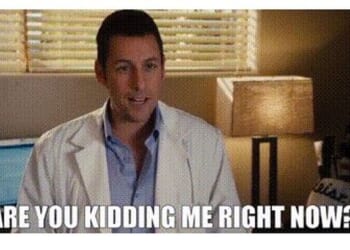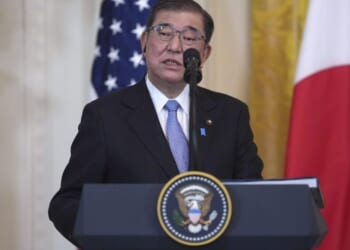
Peter Laviolette chuckled as a grin started to spread across his face.
His answer, in a way, was fitting given everything that has gone wrong for the Rangers recently.
They’d just dedicated the final half of practice Sunday to fixing their woeful power play — 2-for-43 over the past 16 games — and taking the latest stab at finding a solution, but when Laviolette fielded a question about whether the Blueshirts can take any positives from what transpired inside their training complex, he started to smile.
“There was a lot of good chances out there to score goals,” Laviolette said. “No goals.”
That’s exactly what happened Saturday during the lifeless debacle of a loss to the Devils, where the Rangers power play couldn’t capitalize on two opportunities and allowed a shorthanded tally.
That happened during their two games prior to that against the Wild and Sharks, too — and in 10 of 11 games overall dating back to March 13.
While Laviolette added that he thought the Rangers moved the puck around well Sunday, the Blueshirts are still left with a similar reality heading into their game Monday and the final five of the regular season after that: The top unit has stalled, and the second unit — containing some youth that could help provide a jolt — is still trying to carve out more ice time despite Laviolette calling them the most “noticeable” group following Friday’s practice.
Days like Sunday have become routine for the Blueshirts during a frustrating season, where they’re left trying to concoct answers — sometimes for allowing too many goals, other times for not producing enough and now for failing to generate anything to revive what has previously been a defining strength — for what went wrong.
Adam Fox, Artemi Panarin, Mika Zibanejad, J.T. Miller and Vincent Trocheck received all the reps with the top unit Sunday, while Chris Kreider, Alexis Lafrenière, Gabe Perreault (with Brennan Othmann rotating in) and Jonny Brodzinski earned the forward reps for the second unit — with Zac Jones skating in K’Andre Miller’s spot with the latter sick and not practicing.
That second unit’s structure possesses a blend of veteran and youth, with Kreider historically a strong net-front presence on the top power-play group and the pair of young forwards — Othmann and Perreault — both talented enough to provide a spark.
“When power-play two gets out there, we’re just trying to focus on just getting shots toward the net, recovering pucks and just keep on firing right back at the net,” Brodzinski said. “It’s the only way that we’re really gonna get out of this slump, is stop getting east-west with it and just start putting a lot more pucks at the net.”
Brodzinski has tried to help with Perreault’s adjustment to facing “quicker” NHL penalty-kill units, when he’ll likely have limited time and space to operate along the walls.
On Sunday, Brodzinski pointed out to Perreault that he’ll be able to provide support in most scenarios from his spot in the bumper, and compared to college, where Perreault spent the rest of this season before inking his entry-level deal with the Rangers last week, those outlets will serve as one of the only ways to avoid defensive pressure.
Othmann, too, thinks he can carve out a role on the power play over time, but told The Post “we’ll see what happens” across the rest of the season.
It wouldn’t be “a shock” — he has learned to not be surprised by anything in both the AHL and NHL — and would validate the belief Othmann has in his potential.
There’s no easy solution to their most pressing dilemma as the Rangers remain outside of the playoff picture — four points behind the Canadiens for the Eastern Conference’s second wild-card spot entering Sunday night — with only six games left to change that outlook.
They’ve tried shuffling.
They’ve tried using Perreault on the second unit. Will Cuylle has earned some power-play time with that group, too.
They even reunited with Miller via trade and added him right to the top group, too.
Recently, though, Laviolette has certainly dropped hints suggesting the second unit impressed him the most. The more “effective” unit.
The more “noticeable” unit.
And at a juncture of the year when it’ll become easy to press, at a time when each empty power play carries amplified stakes and consequences, the common denominator of any noticeable power-play group — at least in the eyes of Brodzinski — is, somehow, finding a way to keep “simplifying” everything.
“It’s not rocket science, I don’t think,” Brodzinski added when asked about noticeable power plays. “All the most successful power plays in the entire league, it’s just shoot the pucks and recovering pucks. So you have one more guy than them, so it should be an advantage.”











